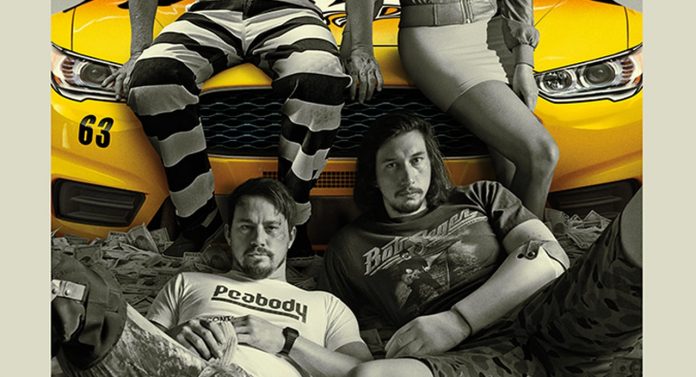The heist film is an iconic portion of America’s film history and Logan Lucky comes as the most recent and enjoyable in this tradition. Unlike many of its predecessors, Logan Lucky accomplishes more than stringing together action sequences with a half-cocked plot. Director Steven Soderbergh collaborates once again with Channing Tatum (Magic Mike), but also features an all-star supporting cast. Adam Driver, Daniel Craig, Katie Holmes, and Seth MacFarlane all play surprisingly minor roles despite their usually headlining roles.
The film presents Tatum as a down-on-his-luck, hard-working single father to a daughter who dreams of winning all the beauty pageants she can find, with a mother (Katie Holmes) that will encourage her the whole way along. He is supported by several other rag-tag anti-heroes. Adam Driver play’s Tatum’s amputee brother, while Daniel Craig takes a backseat role as Joe Blow, an incarcerated safe blowing expert.
Set in the very American South Carolina, Tatum and his mangy band plan a robbery of a NASCAR race. The patriotism is spread on thick in Logan Lucky with vocal sentiments like: “Robbing NASCAR is like robbing America!” Every corner of the film pools with Americana culture and values; none any more obvious than that great American heist dichotomy. Though every citizen is entitled to their own possessions, wealth, and way of life, robbing corporations and scamming insurance companies is a fine way to get there. From a director like Soderbergh, this theme seems to be par for the course.
Watching Tatum play a touching, serious lead role with very low comedic relief is mildly unnerving, but doesn’t draw too much attention; he plays it well, but no better than he needs to. The atmosphere of the whole film contributes to the perched-on-a-ledge feeling that comes from casting Tatum as a lead. It’s not a period piece, but it feels like it’s stuck in a period (maybe because it’s set in the American South). Despite strong patriotism and classical American values, Tatum and his gang never cross the line into the kind of Southerners projected in mainstream media today. The film is sympathetic to the plight of the stereotyped bigots from down south, and neatly avoids any situation in which those values might come into play.
Logan Lucky has a strangely sober and up front point of view. Presented in an anamorphic aspect ratio, but with a field of view similar to the human eye, the film feels very real when you watch it. There aren’t too many cutaways or close ups in this film either. The cinematography isn’t overwrought, tends to stay wide, and favours long takes. Once scene, where four characters have a crucial conversation, is shot in one long take with all four actors in the shot at all times. The film boils with simplicity and refined camera technique. This visual profile, in conjunction with the caricatured but honest characters, makes for a fairly non-conformative action film — Logan Lucky is not about the frills and explosions.
With flicks like Hell or High Water, Baby Driver, and Nocturnal Animals all out in the last year, it may seem like the wave of heist films is attempting to unseat the superhero films that reign superior in the box office. But this isn’t the case. The heist film has always been a huge part of American cinema and Americana identity, and will likely remain so for many years to come.
Lucky Logan separates itself from the pack as a feature that can be watched alike by the mindless and the mindful and satisfy each. It’s not going to educate you about anything, but if you were planning on doing nothing for two hours, watch this instead. When you reach the credits of the film, look a little closer at the “this movie is a work of fiction” disclaimer because Soderbergh left you a little message: “Nobody was robbed during the making of this movie. Except you.”


